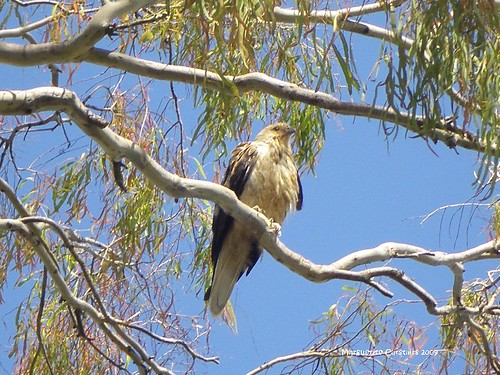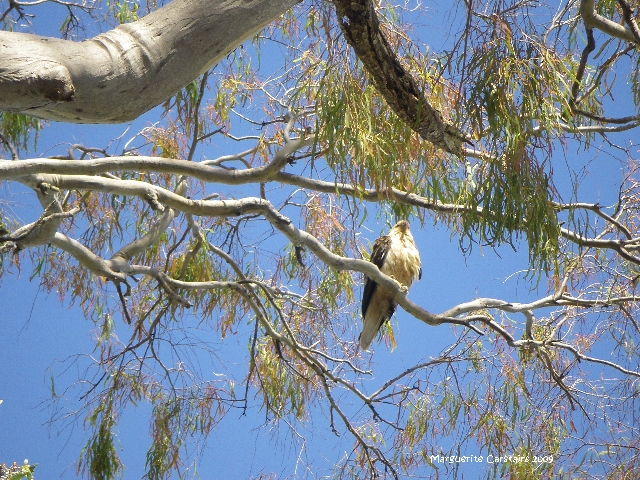Osprey
Scientific name: Pandion haliaetus
Family: Accipitridae
Order: Falconiformes
The Osprey is a medium-sized fish-eating raptor (bird of prey). It has dark brown upperparts contrasting with pale underparts. There is a black band through the eye, separating the white throat from the pale crown. The Osprey has a rather small head and neck and typically swivels its head around or sways its head from side to side. When it is perched, there is a short bristly crest. The eyes are placed well forward on the head. The fingered wings in flight are narrow and angled distinctively. There are dark carpal patches on the underwing (at the bend in the wing). The beak is strongly hooked and the legs are powerful. The female is similar to the male but is larger and has a fuller, darker breast band.
The Osprey is also called the Fish Hawk or White-headed Osprey.
The Osprey is cosmopolitan, being found in many coastal and lake areas of the world. In Australia, it is found on the north and east coast from Broome to the south coast of New South Wales. There is also a southern population from Kangaroo Island to the Great Australian Bight and a western population from Esperance to Cape Keraudren. Ospreys are also found in the Phillipines, Indonesia and New Guinea.
Ospreys are found on the coast and in terrestrial wetlands of tropical and temperate Australia and off-shore islands, occasionally ranging inland along rivers, though mainly in the north of the country.
Ospreys are sedentary, though they will range more freely in non-breeding periods. They are frequently faithful to a nest site, using the nest for many years. Young birds may disperse 20 km - 400 km. In Europe, Ospreys are migratory, moving to warmer countries in the winter.
The Osprey feeds mainly on medium-sized live fish, which it does not swallow whole, but rips apart to eat. The Osprey patrols the coast, searching for prey. It folds its wings, then drops headlong, with its feet forward to snatch a fish with its talons. It may go right under the water or snatch a fish from the surface, before lifting off again, with strong wing strokes.
http://www.birdsinbackyards.net/bird/331


140x45.jpg)




No comments:
Post a Comment